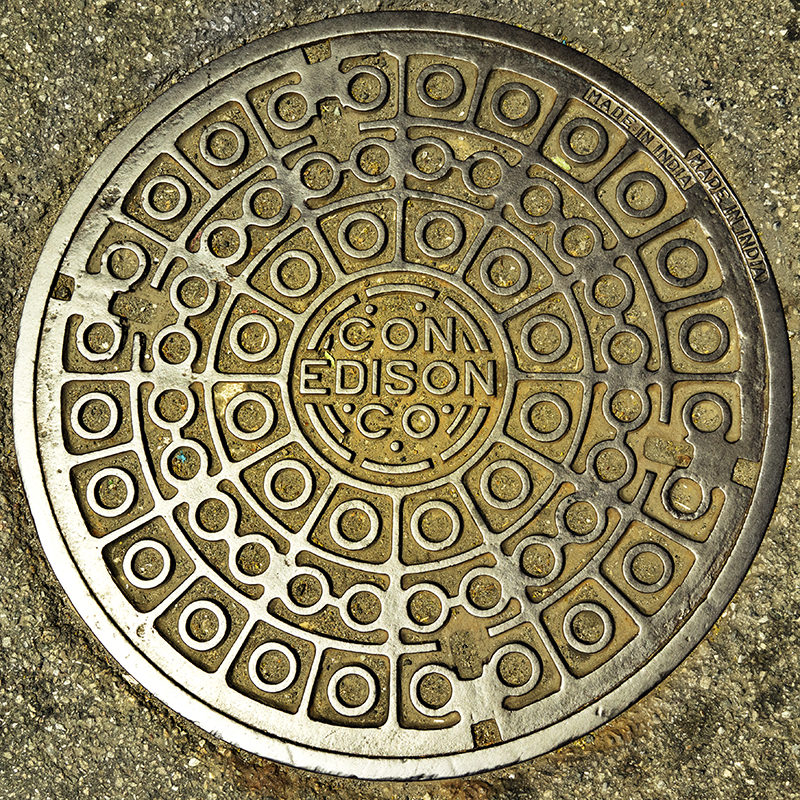Circa 1961 to 1999
When the Consolidated Edison Co was formed in 1936 from the various electric and gas companies owned by the Consolidated Gas Company of New York, one of the absorbed units was the Consolidated Telegraph and Electrical Subway Co. The CT&ES Co had long been the sidewalk 'face' of the Edison Companies in Manhattan and the Bronx. (see ____) Although there are a few "Edison" covers in Manhattan that seem to have migrated over from the Brooklyn Edison Co, and a single 'CE Co' cover that is a clear descendent from the Edison Electrical Illuminating Company of New York (see below) Con Edison was not directly evident on Manhattan and Bronx streets from the early 1900s until the 1960s.
In 1961 Con Ed finally absorbed it's fully owned subsidiary CT&ESCo. (it had something to do with lawyers, money and the SEC) and by the mid 1960's started to produce this elegant, definitive, Con Edison Cover.
DESIGN:
The cover takes the wheel and spoke pattern of earlier covers as well as the pattern of raised circles in each of the coffered spaces made by the spokes and thin rings as used by the Brooklyn Edison Co. The refinement of the design is evident in the circles. Seemingly drilled after casting in the "Edison" covers, the circles in this cover are finely cast, and in this instance are purely decorative, none serve as vents.
UTILITY:
This style cover came to prominence in the 1960's when the concept of a unified corporate design became popular. Perhaps goaded in part by the hexagonal design used by AT&T and all the Bell Telephone companies on their covers (see ___), this design became part of the image being created for ConEd and was used in advertisements and signage for the corporate slogan "Dig We Must for a Greater New York." The design was in use until the "Peter Arnell" corporate makeover in the year 2000.
RANGE:
There are still many thousands of examples of this cover throughout New York City. The design and close varients are also widely used and imitated, often for private or specialized electrical lines. In the catalogs of some contemporary foundries, the design is referred to as the "Con Edison" but it can and is used indiscriminately for a wide range of uses.



